Jupiter’s Great Red Spot (GRS) is one of the defining features of the Solar System. It is the largest storm that astronomers have seen since the 1600s. However, the date of its formation and longevity are up for debate. Have we been seeing the same thing all this time?
GRS is a large anticyclonic (counter-clockwise rotating) storm that is larger than Earth. Its wind speed exceeds 400 km/h (250 mp/h). It’s an icon that humans have been looking at since at least the 1800s, possibly earlier. Its history, including how it came to be, is a mystery.
Its earliest observation may be in 1632 when the German Abbott used his telescope to observe Jupiter. 32 years later, another observer reported seeing the GRS moving from east to west. Then, in 1665, Giovanni Cassini observed Jupiter with a telescope and discovered the presence of storms at the same latitude as GRS. Cassini and other astronomers observed it continuously until 1713 and called it the Permanent Spot.
Unfortunately, the astronomers lost track. No one saw the GRS for 118 years until astronomer S. Schwabe saw a clear, roughly circular structure at the same latitude as the GRS. Some consider that observation to be the first observation of the current GRS and that the storm formed again at the same latitude. But the details fade more and more as we look. There are also questions about the previous storm and its relationship to the current GRS.
A new study in Geophysical Research Letters combined historical records with computer simulations of the GRS to try to understand this chimerical climate phenomenon. Its title is “The Origin of Jupiter’s Red Spot,” and the lead author is Agustín Sánchez-Lavega. Sánchez-Lavega is Professor of Physics at the University of the Basque Country in Bilbao, Spain. He is also head of the Planetary Science Group and the Department of Applied Physics at the University.
“Jupiter’s Great Red Spot (GRS) is the largest and longest-lived known of all the planets in the solar system, but its lifetime is debated, and its formation mechanism remains a mystery,” the authors write in their paper.
Researchers began with historical sources dating back to the mid-1600s, shortly after the telescope was invented. They analyzed the size, structure, and movement of PS and GRS. But that is not an easy task. “The visibility of the GRS and its Hollow throughout Jupiter’s observational history has varied greatly due to changes in size, albedo and contrast with surrounding clouds,” they write.
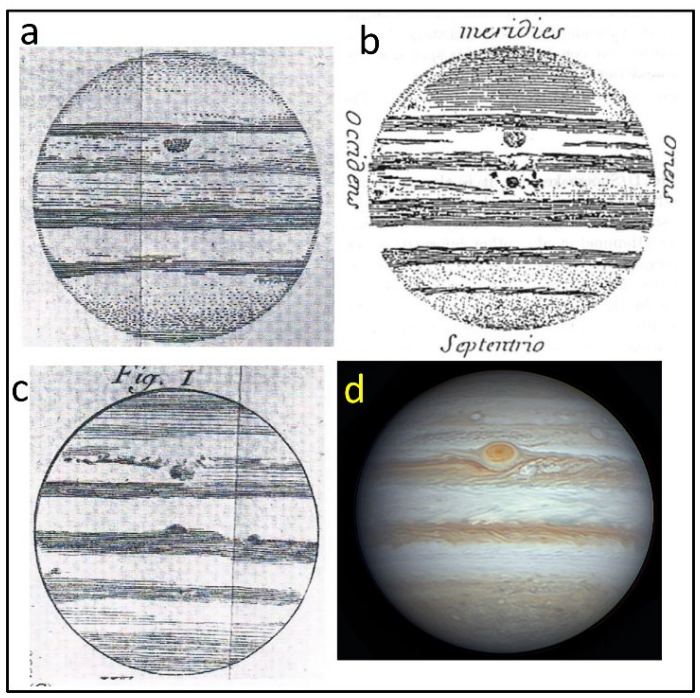
“From measurements of size and dynamics we found that it is very likely that the current GRS was the PS observed by GD Cassini. The PS probably disappeared sometime between the 18th and 19th centuries, at which point we can say that the longevity of the Red Spot now exceeds 190 years at least,” said lead author Sánchez-Lavega. The GRS was 39,000 km long in 1879 and has shrunk to 14,000 km since then. It has also become more rounded.
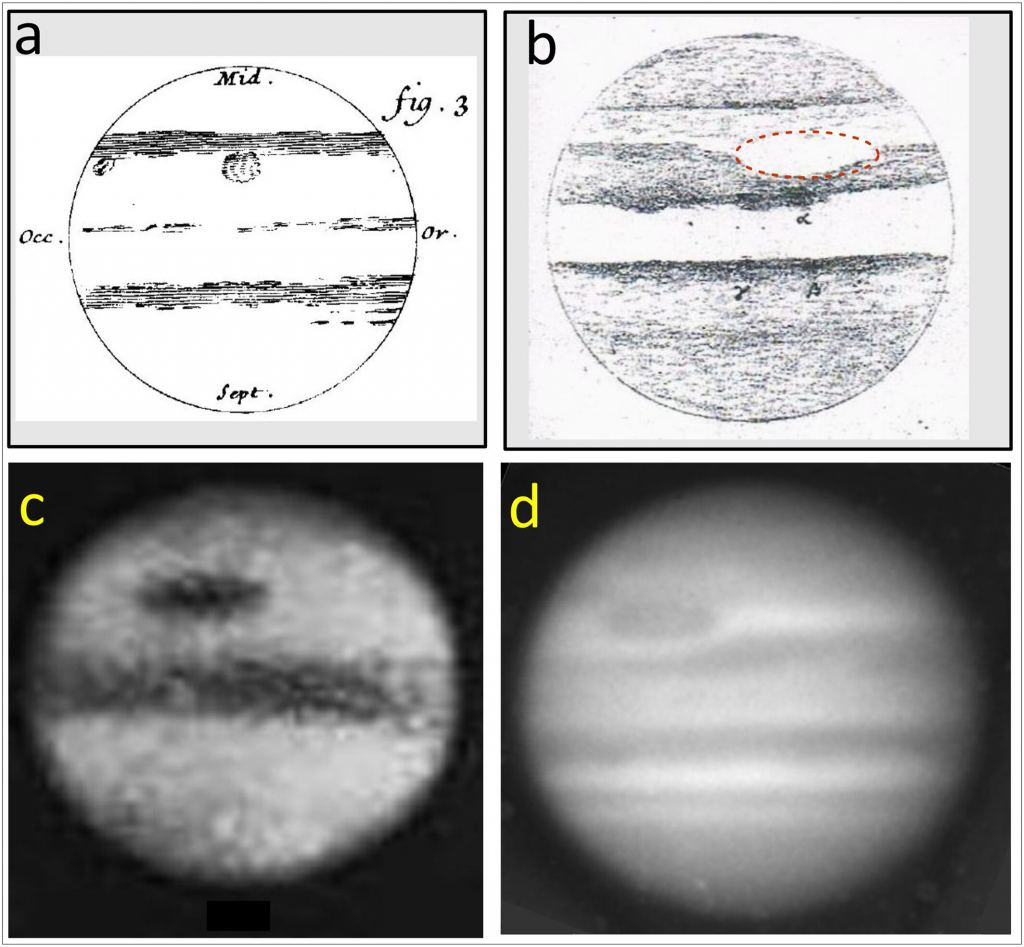
The historical record is valuable, but we have different tools at our disposal now. Space telescopes and spacecraft have studied the GRS in ways that Cassini and others could not imagine. NASA’s Voyager 1 captured our first detailed image of the GRS in 1979, when it was more than 9,000,000 km from Jupiter.
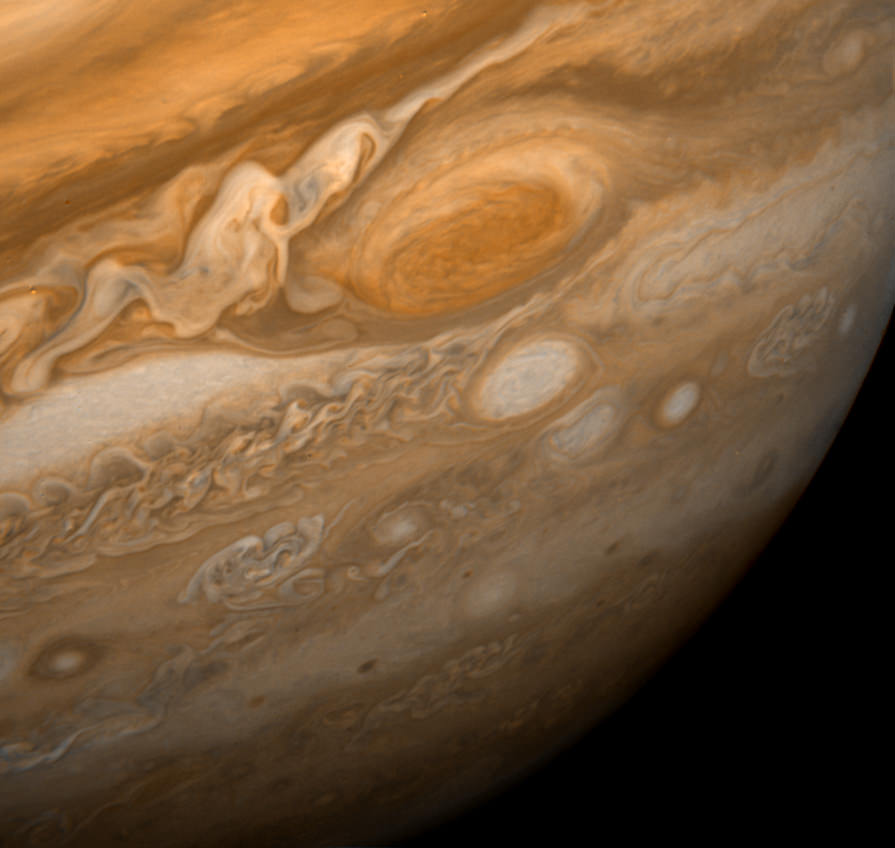
Since the Voyager image, the Galileo spacecraft and Juno have both photographed the GRS. Juno, in particular, has given us the most detailed images and data on Jupiter and the GRS. It took pictures of the planet from just 8,000 km above the surface. Juno takes raw images of the planet with its Junocam, and NASA welcomes anyone to process the images, resulting in masterful images of the GRS like the one below.
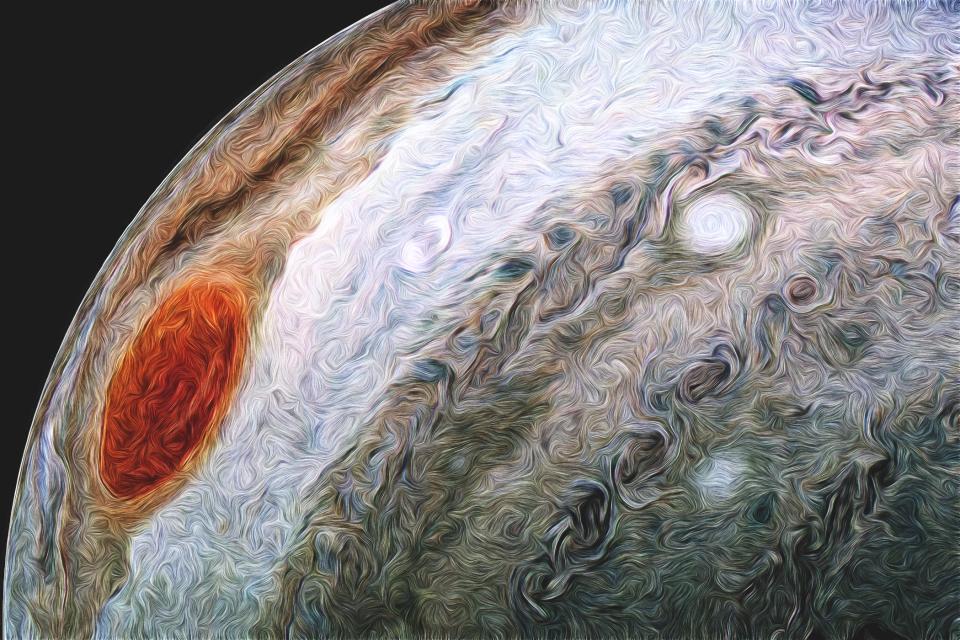
Juno also measured the depth of the GRS, something previous efforts were unable to achieve. Recently, “various instruments on the Juno mission in orbit around Jupiter have shown that the GRS is shallow and thin compared to its horizontal dimension, as it is vertically 500 kilometers long,” explained Sánchez-Lavega.
Jupiter’s atmosphere has opposite winds at different latitudes. In the north of the GRS, the wind blows to the west and reaches a speed of 180 km / h. South of the GRS, the wind is blowing against it at a speed of 150 km/h. This wind creates a strong wind shear that develops a vortex.
In their supercomputer simulations, the researchers investigated the different forces that could produce GRS in these conditions. They considered the eruption of a large storm like the type that occurs, albeit rarely, on Saturn. They also investigated the nature of small cyclones formed by the wind shear that merged together to form the GRS. Both produced anti-cyclonic storms, but their shapes and other characteristics did not match the current GRS.
“Based on these simulations, we conclude that storm systems and convergence, although producing a single anticyclone, are likely to form a GRS,” the researchers write in their paper.
The authors also say that if any of these were to happen, we should see them. “We also think that if one of these unusual events had occurred, it must have or its consequences in the atmosphere have been observed and reported by astronomers at that time,” said Sánchez-Lavega.
However, other simulations proved more accurate in reproducing the GRS. Jupiter’s wind is known to have an unstable condition called the South Tropical Disturbance (STrD). When the researchers ran supercomputer simulations of STrD, they created an anti-tornado storm similar to the GRS. STrD captures different winds in the area and captures them in a long shell like GRS. “We therefore propose that the GRS arises from a long cell derived from the STrD, which gained cohesion and cohesion as it decreased,” the authors write.
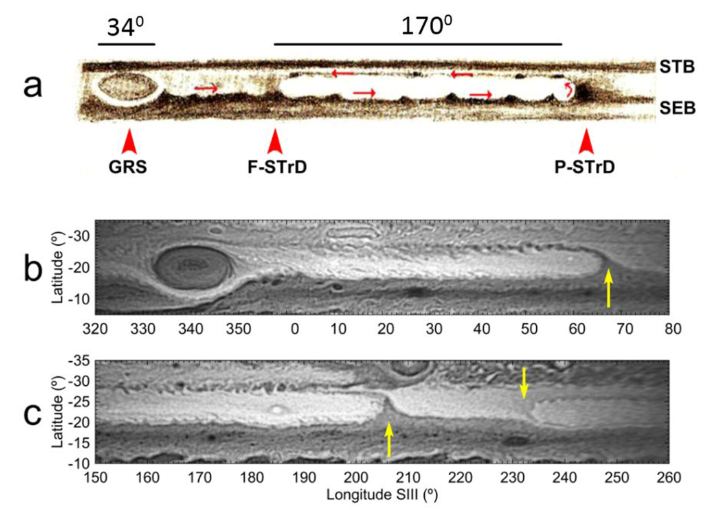
The simulations show that over time, the GRS would rotate faster as it shrinks and compacts until the elongated cell more closely resembles the current GRS. Since this is what GRS looks like now, the researchers settled on this description.
The process probably began in the mid-1800s when the GRS was much larger than it is today. That leads to the conclusion that the GRS is only 150 years old.
#Great #Red #Spot #created #early #1800s